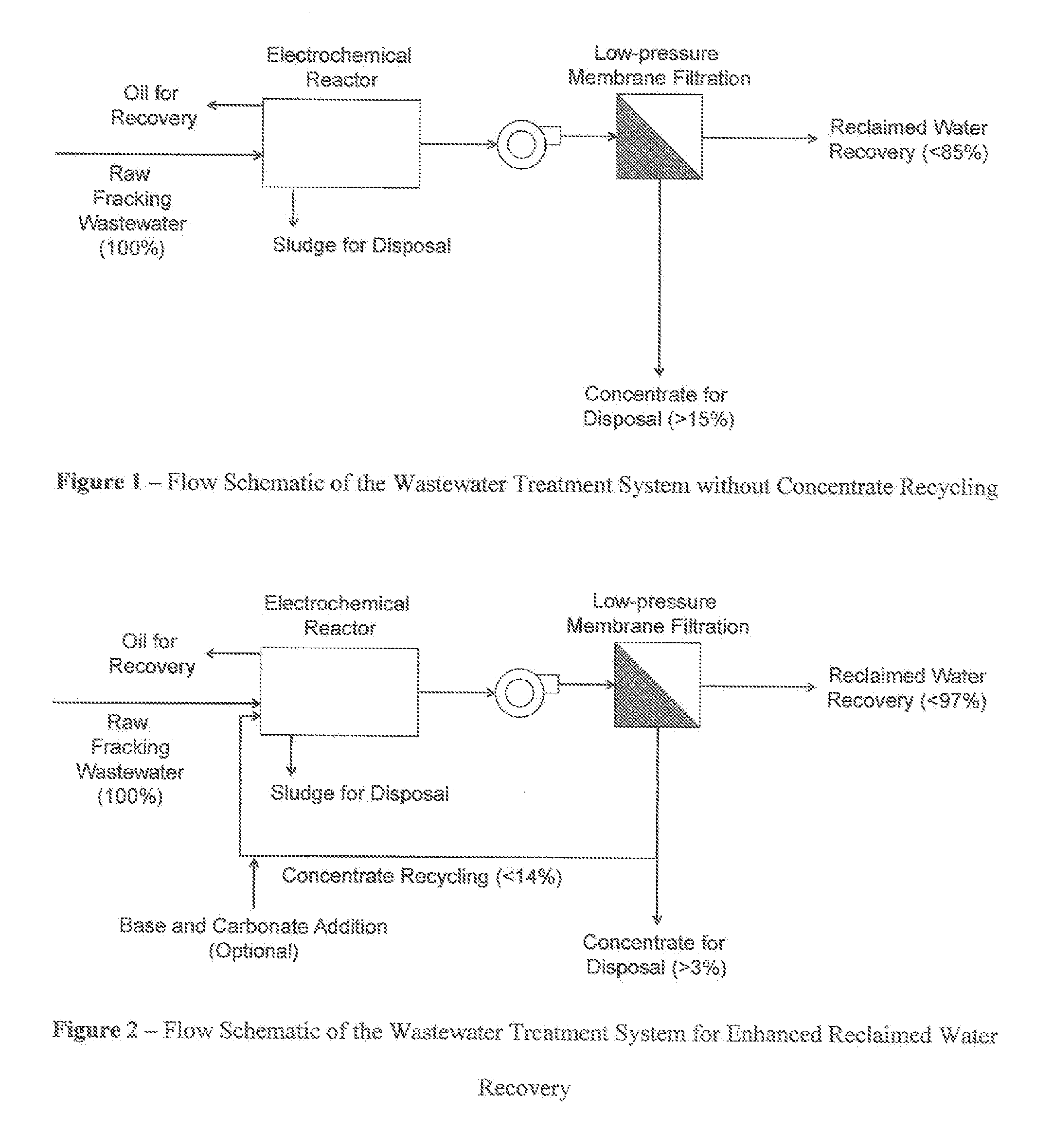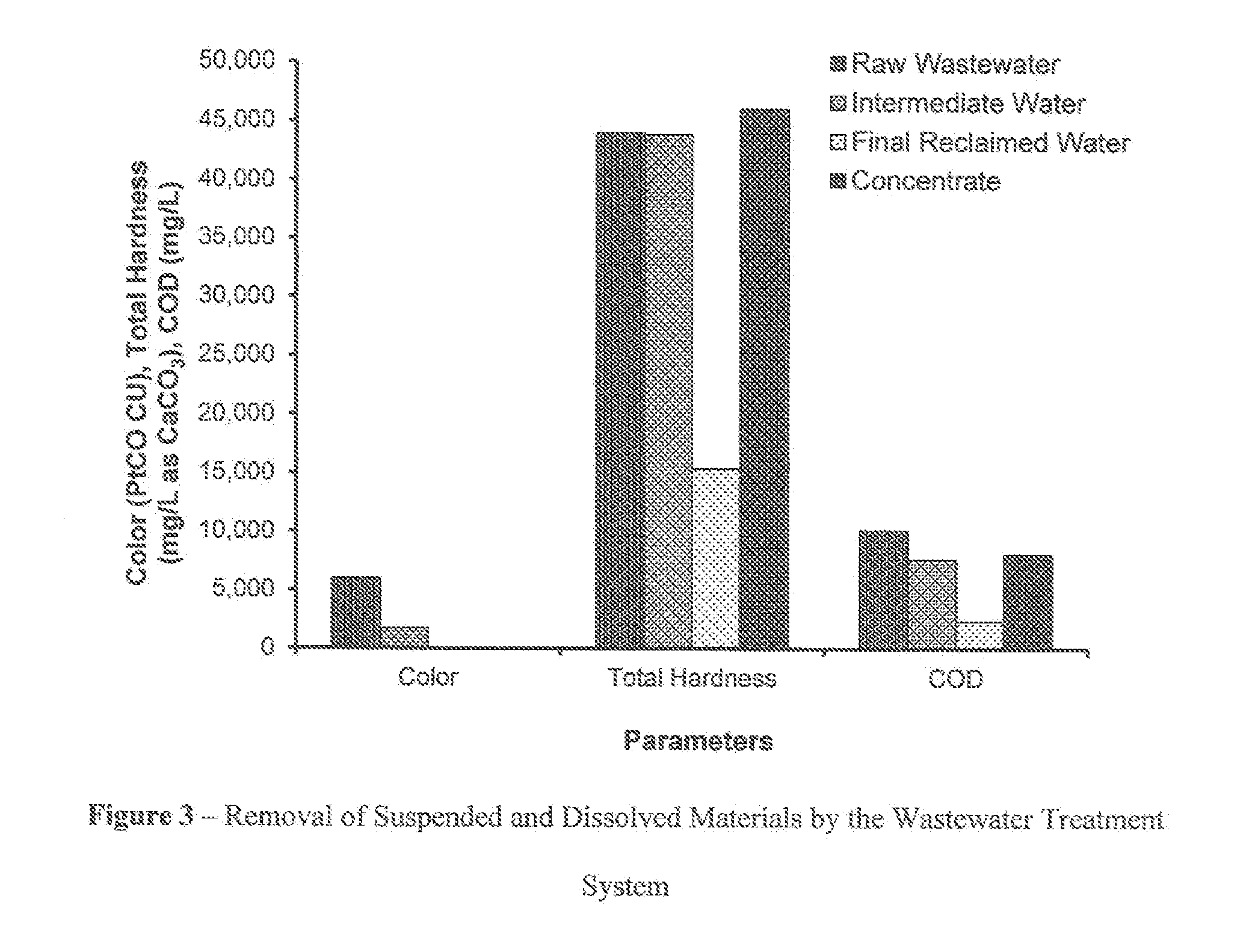System for enhanced reclaimed water recovery
a reclaimed water and enhanced technology, applied in the field of water purification and reclamation, can solve the problems of resistance of fracking companies, difficult treatment of wastewater, and use of conventional methods, and achieve the effects of reducing the rate of final waste generation, increasing the overall reclaimed water recovery, and maintaining the quality of reclaimed water
- Summary
- Abstract
- Description
- Claims
- Application Information
AI Technical Summary
Benefits of technology
Problems solved by technology
Method used
Image
Examples
working examples
NON-LIMITING WORKING EXAMPLES
[0023]The following example illustrates one embodiment of the invention. The parameters of color, total hardness, and chemical oxygen demand (COD) are presented in FIG. 3.
[0024]A produced water sample obtained from a fracking operation in the Midwestern United States was treated by a semi-batch wastewater treatment system. The initial concentrations of TDS, total hardness, alkalinity, and COD were 293,000, 44,000, 360, and 10,100 mg / L, respectively, while initial values of pH and color (platinum-cobalt color scale (Pt—Co) color units) were 5.4 and 6,000, respectively. The experiment was conducted at temperature=24 to 26° C. FIG. 3 shows the removal, of suspended and dissolved materials by the method described above. The overall reclaimed water recovery was approximately 80% with concentrate recycling, whereas the recovery was 70% without recycling.
PUM
| Property | Measurement | Unit |
|---|---|---|
| Fraction | aaaaa | aaaaa |
| Pressure | aaaaa | aaaaa |
| Chemical properties | aaaaa | aaaaa |
Abstract
Description
Claims
Application Information
 Login to View More
Login to View More - R&D
- Intellectual Property
- Life Sciences
- Materials
- Tech Scout
- Unparalleled Data Quality
- Higher Quality Content
- 60% Fewer Hallucinations
Browse by: Latest US Patents, China's latest patents, Technical Efficacy Thesaurus, Application Domain, Technology Topic, Popular Technical Reports.
© 2025 PatSnap. All rights reserved.Legal|Privacy policy|Modern Slavery Act Transparency Statement|Sitemap|About US| Contact US: help@patsnap.com


